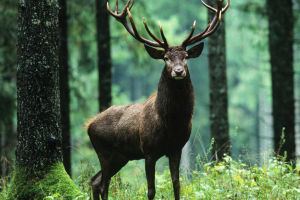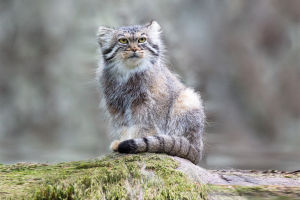We are about to dive into the world of the tree sparrow, a small yet captivating bird with an interesting history and presence. This species, known scientifically as Passer montanus, can be found across many regions of the world, from temperate zones of the Old World to parts of Southeast Asia.
With a beautiful blend of brown and white feathers, the tree sparrow has earned a place in the hearts of bird lovers and naturalists alike.
In this article, we'll explore everything about the tree sparrow, from its scientific classification to its remarkable habits, habitat, and significance in culture. So, let’s embark on this delightful journey together and learn more about one of nature’s tiny wonders.
Things you need to know about HOUSE SPARROWS!
Video by A Shot Of Wildlife
Scientific Classification and Distribution
We begin by understanding the scientific classification of the tree sparrow. The tree sparrow belongs to the Passer genus, which is part of the sparrow family Passeridae. This bird is commonly found in temperate regions of the Old World, including Europe, Asia, and parts of North Africa. While it’s sometimes mistaken for the house sparrow, Passer montanus can be distinguished by its unique habitat preferences and appearance.
Interestingly, the tree sparrow has also made its way to other parts of the world, including the United States, where it is often called the Eurasian tree sparrow. Despite being widely distributed, the tree sparrow maintains a consistent appearance across its range, and it can often be seen nesting in trees and shrubs in suburban and rural areas.
Physical Characteristics of the Tree Sparrow
What makes the tree sparrow stand out physically is its petite size and charming appearance. The bird is predominantly brown and white, with a striking black patch on the side of its head and a white cheek patch. Its body is compact, making it look even smaller in comparison to other birds in its family. Tree sparrows are known for their characteristic hopping motion on the ground, which makes them easily identifiable.
While they share many similarities with other sparrows, the tree sparrow’s preference for nesting in tree cavities or bushes is a distinctive feature. Its ability to adapt to both urban and rural environments has helped maintain its widespread presence.
Habitat and Behavior
We next take a closer look at the tree sparrow’s habitat. In Europe, these birds are mostly found in open country and wooded areas, preferring spaces where they can easily access both food and nesting sites. In East Asia, however, they have become a common sight in towns and cities. The adaptability of the tree sparrow is a key reason why it thrives in such diverse environments.
This bird is a social creature, often found in small flocks. During the winter, these flocks may gather in larger groups to forage for food. Tree sparrows feed primarily on seeds, but they also consume insects and small invertebrates during the breeding season. They are often seen hopping around on the ground or perched on branches, searching for food.
Cultural Significance and Symbolism
The tree sparrow holds a special place in various cultures, particularly in East Asia, where it is often celebrated in art and literature. In traditional Chinese and Japanese art, the sparrow is admired for its resilience and agility, often symbolizing freedom and perseverance.
In some parts of the world, the tree sparrow has also been seen as a nuisance, particularly in agricultural regions where it may be considered a pest. However, its role in nature as a seed disperser and insect controller cannot be overlooked.
Conservation Status and Challenges
Currently, the tree sparrow is not considered to be at risk. The bird’s widespread population ensures its stable existence, but it has faced some challenges, particularly in Western Europe. The decline in tree sparrow populations in some regions has been linked to changes in agricultural practices, such as the use of pesticides and a reduction in winter crop residues.
Despite these challenges, tree sparrows remain a symbol of resilience. Conservation efforts have been undertaken in some regions to protect their habitats, especially in urban and rural settings where they have a strong presence.
The Tree Sparrow's Enduring Legacy
In conclusion, the tree sparrow is a bird that has managed to adapt to various environments and continue thriving across the globe. Its charming appearance, fascinating behavior, and cultural significance make it a remarkable species to observe and learn about. As we continue to appreciate the natural world around us, the tree sparrow serves as a reminder of nature's delicate balance and the importance of preserving it for future generations.
So next time you spot a little tree sparrow hopping around in a tree or field, take a moment to admire its beauty and the role it plays in the world. Thanks for joining us on this adventure into the world of this small but mighty bird!
We hope you enjoyed learning about the tree sparrow. Feel free to share your thoughts or ask any questions! Happy birdwatching, Lykkers!


